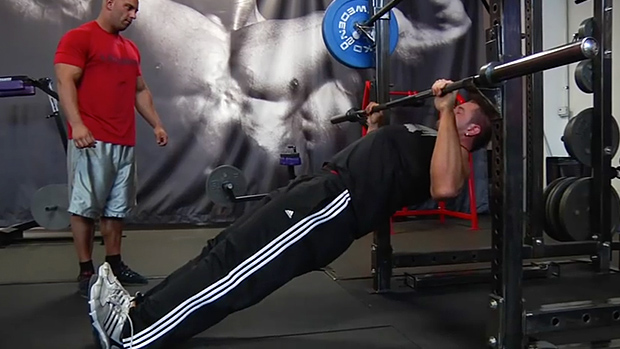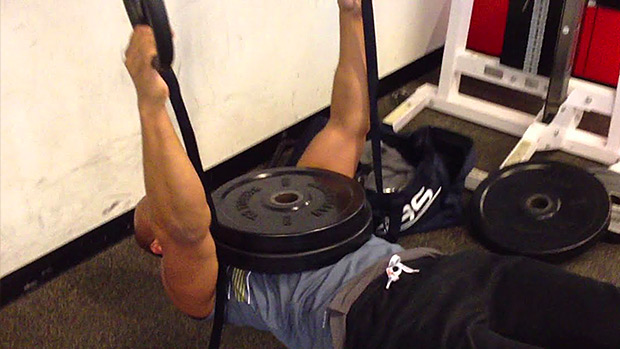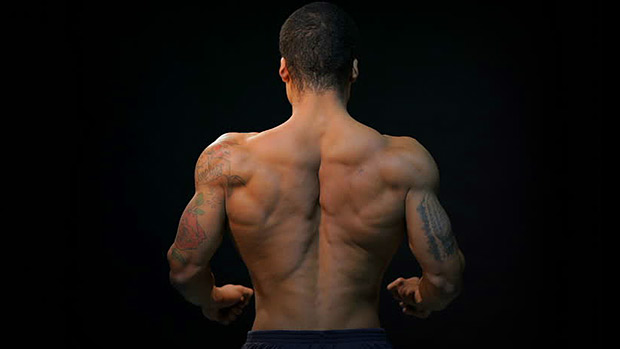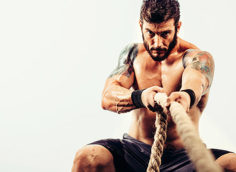The inverted row is a fantastic exercise to build upper-back strength and size. It offers a fresh alternative to cable, barbell, and dumbbell row. And the inverted row is fast and easy to set up with suspension straps, Smith machine, or a bar in the rack.

The inverted row is also a great way to hammer your upper back while sparing your lower back for squat and deadlift. The downside with the inverted row is its difficult to load. As a result, most strong lifters quickly outgrow the inverted row and move on.
Inverted Row with Plate On Chest

This is what most lifters try. It works okay, but the plate tends to slip off. You may also find that the weights get in the way of your hands (and the bar if you're rowing from a bar). In addition, you have limited loading options. If you want multiple plates, you need a training partner.
Inverted Row with Chains
Drape them around your traps when loading push-ups and they'll make you look really hardcore. But with inverted row chains tend to slide around and can easily slide right off. They can also get in the way of your arms.
Inverted Row with Weighted Vest
A weighted vest works great, but only during the set. The problems arise before and after the set. Vests take a lot of time to change the weight. They're cumbersome and awkward to get on and off. And that extra weight pressing down on your rib cage between sets makes breathing (and recovery) a challenge.
One-Arm Inverted Row
This is a good exercise and a viable option. However, you just doubled your training time for the exercise. You also have to divert a lot of your back training focus to core and hip rotational stability. This focus shift isn't bad if it's your goal, but if you're trying to build a bigger back you don't want to take your focus away from it.
All you need are some plates with handles and a dip belt.
- Place the plates on the ground just wider than hip-width apart.
- Sit on the ground between the plates with a dip belt in hand.
- Slide the chain through the top handle part of each plate.
- Find a comfortable spot to place the belt on your torso – lower on your torso is easier.
- Make sure the chain is on the top of the belt.
- Have a great set.
- Slip out and walk around to recover before your next set.
Note: If your dip belt chain isn't long enough for the weights you're using, just get an extra foot of chain and a carabineer from your local hardware store and keep it in your gym bag.
Trying to go too heavy on inverted row puts too much pressure on your chest, you won't be able to retract your scapula, and you won't work your upper back very well. Instead you'll just beat up the connective tissues of your elbows.
Just follow this simple guideline: If you can't keep your chest out, or squeeze your shoulder blades and really feel your back working, you're going too heavy.





